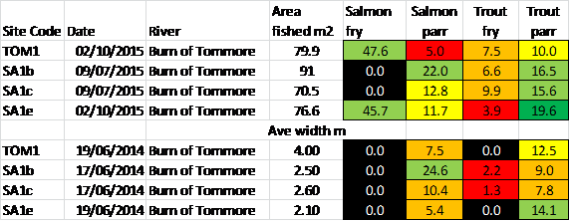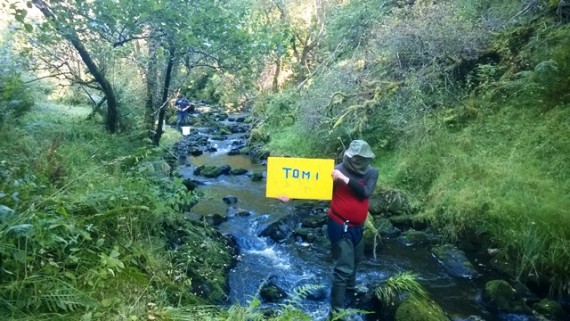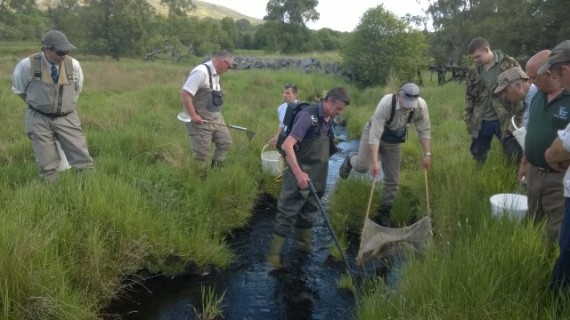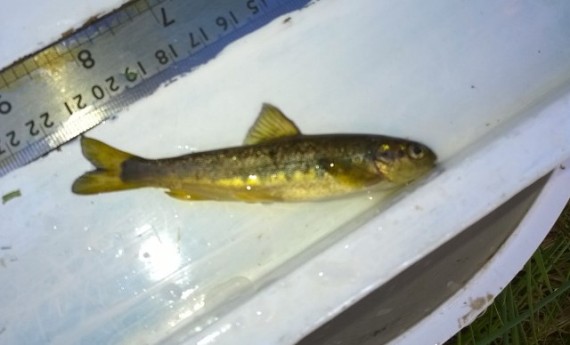The Tommore Burn trap was installed on the 4th March by Jimmy Woods, primarily to test that it was working okay, but it was left in operational mode over the weekend. On Monday morning, to everyone’s surprise, there were 43 fin-clipped presmolts and one fin-clipped 1+ parr. Tuesday’s catch was 24 fin-clipped presmolts and four 1+ parr, with 4 fin-clipped presmolts today and one unclipped.
Since the deployment of the trap last Friday 71 fin-clipped presmolt salmon have been trapped plus a few fin-clipped 1+ parr (which will not smolt in 2016) and one unclipped salmon presmolt. The trap was not deployed until the 20th March last year when the catch in the first eleven days totalled 7 fin-clipped fish. The catch subsequently increased in early April as water levels rose. The total catch of fin-clipped presmolt/smolts in 2015 was 352, therefore the catch in this early phase in 2016 is already 20% of the 2015 total.
The 9am water temperatures have been low, 1.9oC yesterday morning for example, with snow falling nightly.
It is not possible to say at this early stage what the rest of the 2016 Tommore Burn smolt run will be like and as the trap was not put in place until later last year it is impossible to know if we missed a similar early run in 2015. In the past we haven’t deployed smolt traps as early as this because even in the Truim and Tromie (which are located much higher up the catchment) the first reasonable catches were not normally made until about the 20th March.
Most readers will, I’m sure, be aware that the Tommore Burn trap is part of the monitoring associated with the mitigation stocking of this lower River Avon tributary. Fish access is blocked a short distance upstream of the fish trap by an impassable culvert under the Glenlivet Road. The Tommore trap will be monitored daily from now on so that an assessment of the remainder of the smolt run can be made.
The post Tommore Burn smolt trap 2016 appeared first on Spey Fishery Board.
Spey Fishery Board






